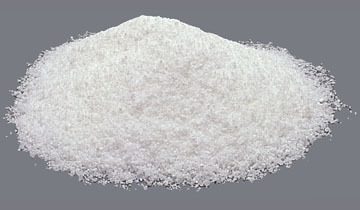Wisconsin Parts Database Instructions and Discussion Team/Group > ILLINOIS
> Industrial Parts
> Remove
> Used
> Without Warranty
> borax fine powder curing agent 1 lb cosmetic component
borax fine powder curing agent 1 lb cosmetic component
Borax, also known as sodium borate, sodium tetraborate, or disodium tetraborate, is an important boron compound, a mineral, and a salt of boric acid. It is usually a white powder consisting of soft colorless crystals that dissolve easily in water.
Borax has a wide variety of uses. It is a component of many detergents, cosmetics, and enamel glazes. It is also used to make buffer solutions in biochemistry, as a fire retardant, as an anti-fungal compound for fiberglass, as an insecticide, as a flux in metallurgy, a texturing agent in cooking, and as a precursor for other boron compounds.
The word borax is from Persian and originates in the Middle-Persian b rak.
Sodium borate is used in biochemical and chemical laboratories to make buffers, e.g. for gel electrophoresis of DNA, such as TBE or the newer SB buffer or BBS (borate buffered saline) in coating procedures. Borate buffers (usually at pH 8) are also used as preferential equilibration solution in DMP-based crosslinking reactions.
Borax as a source of borate has been used to take advantage of the co-complexing ability of borate with other agents in water to form complex ions with various substances. Borate and a suitable polymer bed are used to chromatograph non-glycosylated hemoglobin differentially from glycosylated hemoglobin (chiefly HbA1c), which is an indicator of long term hyperglycemia in diabetes mellitus. Borate and a proprietary synthetic amino acid, Deselex (from Henkel) have been used to complex water "hardness" cations to make a non-precipitating water "softener". Borate alone does not have a high affinity for "hardness" cations, although it has been used for that purpose.
A mixture of borax and ammonium chloride is used as a flux when welding iron and steel. It lowers the melting point of the unwanted iron oxide (scale), allowing it to run off. Borax is also used mixed with water as a flux when soldering jewelry metals such as gold or silver. It allows the molten solder to flow evenly over the joint in question. Borax is also a good flux for 'pre-tinning' tungsten with zinc - making the tungsten soft-solderable.[2]
Borax is replacing mercury as the preferred method for extracting gold in small-scale mining facilities. The method is called the borax method and was first discovered in Sweden and used in the Philippines. [3]
When a borax-water solution is mixed with PVA glue (wood glue), a rubbery precipitate is formed which is the result of cross-linking in the polymer.[4]
Sodium borate is an ingredient in the vaccine Gardasil, manufactured by Merck.
* Ingredient in enamel glazes
* Component of glass, pottery, and ceramics
* Anti-fungal compound for fiberglass and cellulose insulation
* Insecticide to kill ants, cockroaches and fleas
* Precursor for sodium perborate monohydrate that is used in detergents, as well as for boric acid and other borates
* Tackifier ingredient in casein, starch and dextrin based adhesives
* Precursor for Boric acid, a tackifier ingredient in polyvinyl acetate, polyvinyl alcohol based adhesives
* Treatment for thrush in horses' hooves
* Used to make indelible ink for dip pens by dissolving shellac into heated borax
* Curing agent for snake skins
* Curing agent for salmon eggs, for use in sport fishing for salmon
* Swimming pool buffering agent to control the pH
* Neutron absorber, used in nuclear reactors and spent fuel pools to control reactivity and to shut down a nuclear chain reaction
* In agriculture it can be used as a fertilizer to correct boron-poor soils; however, it is required in small amounts. Excess can cause injury to plants. [7]
* To clean the brain cavity of a skull for mounting
* To color fires with a green tint[8]
* Borax can be used as an additive in ceramic slips and glazes to improve fit on wet, greenware, and bisque.
* Borax was traditionally used to coat dry-cured meats such as hams to protect them from becoming fly-blown during further storage.

